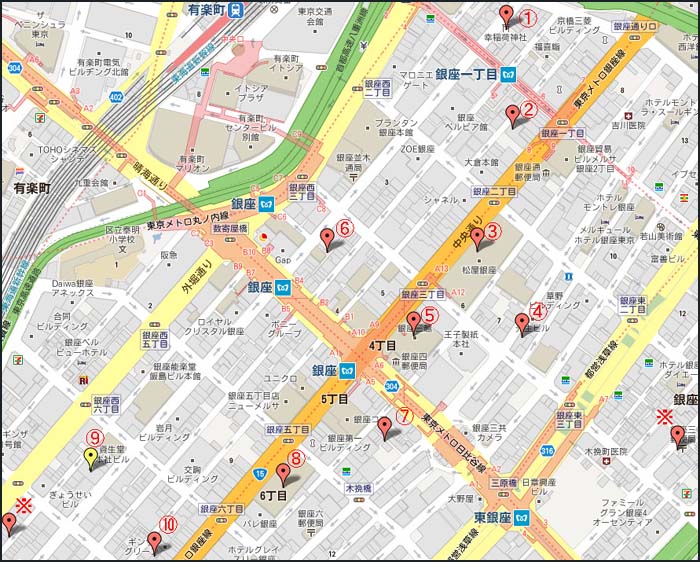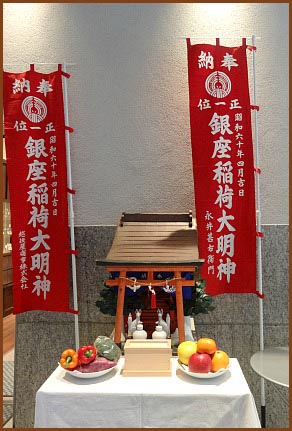[ . BACK to DARUMA MUSEUM TOP . ]
. Onipedia - 鬼ペディア - Oni Demons - ABC-List - .
::::::::::::::::::::::::::::::
Aoni shuuraku 青鬼集落 a hamlet named Aoni "Green Demon"
Aoni Hokujō, Hakuba-mura, Kitaazumi-gun, Nagano / 長野県北安曇郡白馬村北城
(はくばむらあおに)Hakubamura Aoni, Aoni settlement
and
Ozenkisama お善鬼様 O-Zenki Sama

The hamlet is famous for its old farm houses and the spectacular view of Mount Hakuba, the "White Horse".
There are only 15 old houses in the hamlet.
Near the hamlet are remains from settlements of the 縄文時代 Jomon period, named
善鬼堂遺跡 Zenkido and 馬場遺跡 Baba.
The present-day settlement is from the late Edo period till Meiji.
The complicated water canals for the rice fields are called Aoni seki 青鬼堰 weirs from Aoni.
The whole hamlet is a special
重要伝統的建造物群保存地区 - Conservation district of traditional buildings

旅するTZRの文化財撮影記
source : takashitzr.blog62.fc2.com
When the terraced rice fields are full of water in early summer, the mountain range is reflected in the water.

On a very lucky morning in early summer, there is a "Red Hakuba" reflected in the water.

source : 自然風景写真・鏡花水月
..............................
- quote -
Aoni Rice Terraces 青鬼棚田
The terraces are made with stone walls.

There are also well-preserved Kayabuki (thatched) Roof Houses that were built during the period between Edo period to Meiji period in Aoni settlement.
You can have glorious views of Hakuba`s mountain range and Japanese landscape of the Rice Terraces.
There are no restaurants or souvenir shops in the Aoni Rice Settlement.
It is to protect the serene life of the inhabitants of the village.
5 km from Hakuba Station.
- source : veryjapanese.jp/places/aoni-
..............................
Aoni Jinja 青鬼神社(Aooni Jinja ) Aoni Shrine
Located in the North of the hamlet, built in the Early Meiji period.
The deity in residence is 善鬼大明神 Zenki Daimyojin (御善鬼様 O-Zenki Sama)

On the right is a small shrine:
Suwa Yashiro 諏訪社.
Preparations for the annual festival are made in O-Zenki no Yakata.
himomi no shinji 「火揉みの神事」making fire for the Gods
The villagers make fire themselves and light lanterns as offerings for the shrine.
Later there is a firework in the village.
ー Look at a video of the shrine here:
- source : youtube.com/watch -
. Shinto shrine names including 鬼 ONI .
..............................
- reference source : -
Mt. Shirouma (白馬岳 Shirouma-dake) - Shirouma is another reading for Hakuba, "White Horse".
is a peak in the Hida Mountains range of the Japanese Alps, located in Nagano Prefecture and Toyama Prefecture, central Honshu, Japan.
Mount Shirouma is the 26th-tallest mountain in Japan. At 2,932 metres (9,619 ft), it is the highest peak in the Hakuba section of the Hida Mountains, and one of the top "to climb" peaks for Japanese hikers. It is also one of the few peaks in Japan with year-round snow fields (Firn), in the Shirouma Dai Sekkei (白馬大雪渓), or Shirouma deep-snow gorge .
It is located within the Chūbu-Sangaku National Park.
Mount Shirouma is one of the landmark 100 Famous Japanese Mountains.
- - - More in the WIKIPEDIA !
..............................
お善鬼様伝説 The Legend of O-Zenki Sama - The Benevolent Demon
Further away to the North-East of Aoni hamlet is 岩手山 Mount Iwatesan. East of Mount Iwatesan is 戸隠村 Togakushi village and the village of
鬼無里村 Kinasa Mura, "Village without Demons".
Once upon a time there came a giant man to Kinasa, the "Village without Demons", and caused a lot of trouble. The villagers pulled together and confined the giant man into a hole near the bottom of Mount Iwatesan. A while later a traveller told the villagers that a giant man had appeared in Togakushi and helped the people there. He had passed through a kind of tunnel in the mountains and come to the other side, on the way changing his evil manners and became a good and helpful person. The people now called him O-Zenki Sama.
The villagers built a shrine for him, calling him あおに Aoni instead of あおおに Aooni and later the Chinese characters 青鬼 were used to spell the name of the hamlet.
He is also venerated as
Zenki Daimyojin 善鬼大明神
. Togakushiyama no Oni 戸隠山の鬼 Demon from Mount Togakushi .
Nagano 長野県 上水内郡 Kamiminochi district 鬼無里村 Kinasamura village
. Togakushi Jinja 戸隠神社 Togakushi Shrine - Nagano .
..............................
O-Zenki no Yakata お善鬼の館 Mansion of Zenki


長野県北安曇郡白馬村大字北城17641
The building belonged to the 降籏家 Furuhata Family, built in 1908.
It was built to suit the silk farming of the region, facing South, with a large space below the roof for the silk worms. It became useless and empty in 2005 and was then revived as the O-Zenki no Yakata, a kind of local museum to welcome visitors and introduce the village culture.
- reference source : garden-plat.net/matinami/twon -
- reference source : siro.sitemix.jp/nagano/aoni -
- reference source : geocities.co.jp/MusicStar-Live -
::::::::::::::::::::::::::::::

Near the village are groups of Stone Buddha statues,
「向麻石仏群」Mukasso and 「阿弥陀堂石仏群」Amidado.
There are also many Dosojin 道祖神, a speciality of the Azumi region.

.道祖神 Dosojin, Dososhin - Wayside Gods .
..............................
北安曇郡 Kita Azumi District 小谷村 Otari village
ozenkisama お善鬼様 O-Zenki Sama
Near the village is a 高原 highland and there is a 岩穴 boulder with a hole. The people from 戸石 Toishi came here to borrow zenwan 膳椀 trays and bowls. A supernatural being, the "Benevlent Demon" would bring the items and the villagers had to bring them back clean after using them for special gatherings with large crowds, like weddings and funerals.
One day a villager did not bring them back and since then, they were never borrowed again.
In other regions there are the same legends, very often a Kappa or a Tengu brings the goods.
. Zenwanbuchi 膳椀淵 "river pool for trays and bowls" .
and Kappa Legends

. Japanese Legends - 伝説 民話 昔話 – ABC-List .
- reference : Nichibun Yokai Database -
::::::::::::::::::::::::::::::

. - - - Join the Onipedia friends on facebook ! - - - .
::::::::::::::::::::::::::::::
. Onipedia - 鬼ペディア - Oni Demons - ABC-List - .
. Tengu 天狗と伝説 Tengu legends "Long-nosed Goblin" .
. - yookai, yōkai 妖怪 Yokai monsters - .
. Legends and Tales from Japan 伝説 - Introduction .
. Mingei 民芸 Regional Folk Art from Japan .
::::::::::::::::::::::::::::::
[ . BACK to DARUMA MUSEUM TOP . ]
[ . BACK to WORLDKIGO . TOP . ]
- #aoninagano #naganoaoni #aoni -
::::::::::::::::::::::::::::::
--
Posted By Gabi Greve to Kappa - The Kappapedia on 6/22/2017 09:45:00 am













































